High-pivot bikes are a red hot topic on the downhill scene, but do they work on trail bikes too? We check out the Forbidden Druid, a new high-pivot trail rocket, to see if the suspension really can work magic.
We are the ‘craft beer’ generation, we all desire something special, something unique, and we will pay extra for it too. This is reflected in the bike industry too, super-brands are playing catch up to the bespoke, the underdogs are biting back. Despite their smaller volumes, radical brands like Unno, Pole, RAAW and Mojo Geometron are red hot. As core riders sip post-ride expensive craft ales around the pub table, conversations of “what bike will I buy next?” are increasingly crowded with small-volume bespoke brands. So, even though the global economic climate is taking punches, there has perhaps never been a better time to release a new ‘high-end’ bike brand.
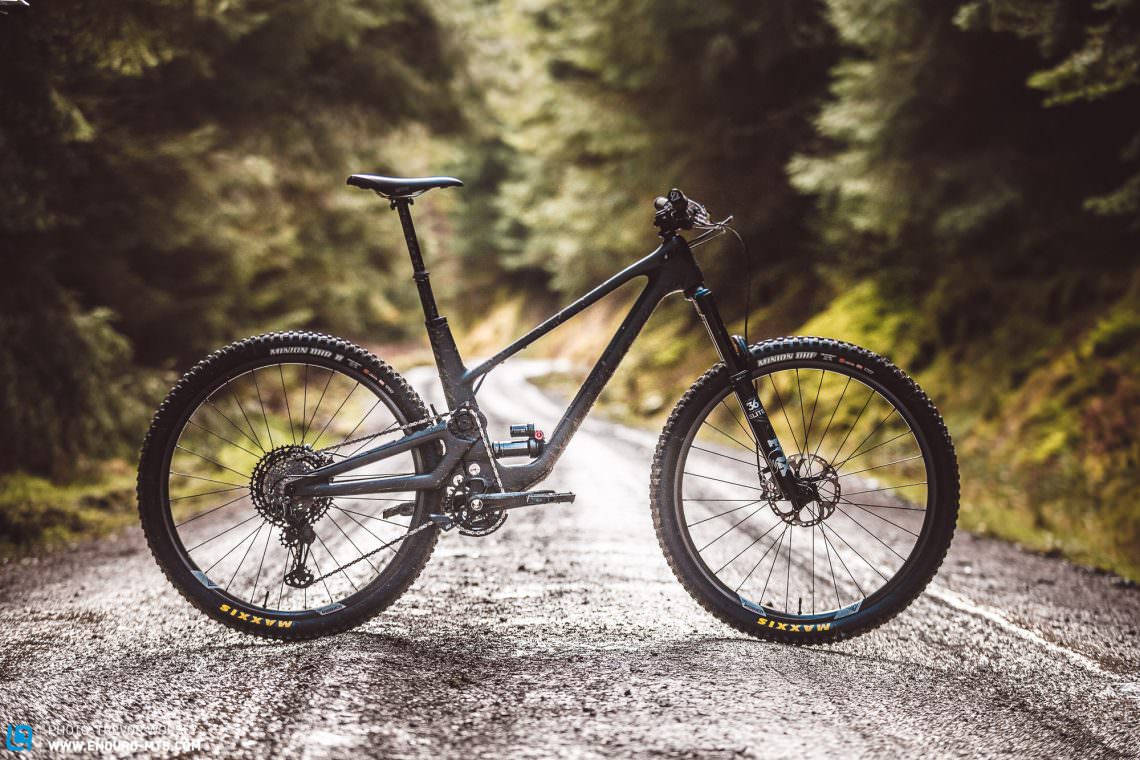
Who are Forbidden Bikes?
Forbidden Bikes – named after the Forbidden Plateau in Cumberland, Canada – is the latest high-end, low-volume brand to hit the market. Owen Pemberton, an ex-Rolls Royce engineer, best known for working on the recent bikes from Norco has joined forces with Alistair Beckett, ex Nukeproof product manager and Trevor Ferrao to launch this exciting new brand. You may have already seen the Druid, their only bike, as Forbidden Bikes dropped a teaser of the sexy new high-pivot trail bike at Crankworx last year, but with no real information, it was nothing more than an enigma. The wait is now over, Forbidden Bikes have finally released all the information on the new Druid trail bike, a 150 / 130 mm 29er, and the team flew over to let us test one on our home trails.
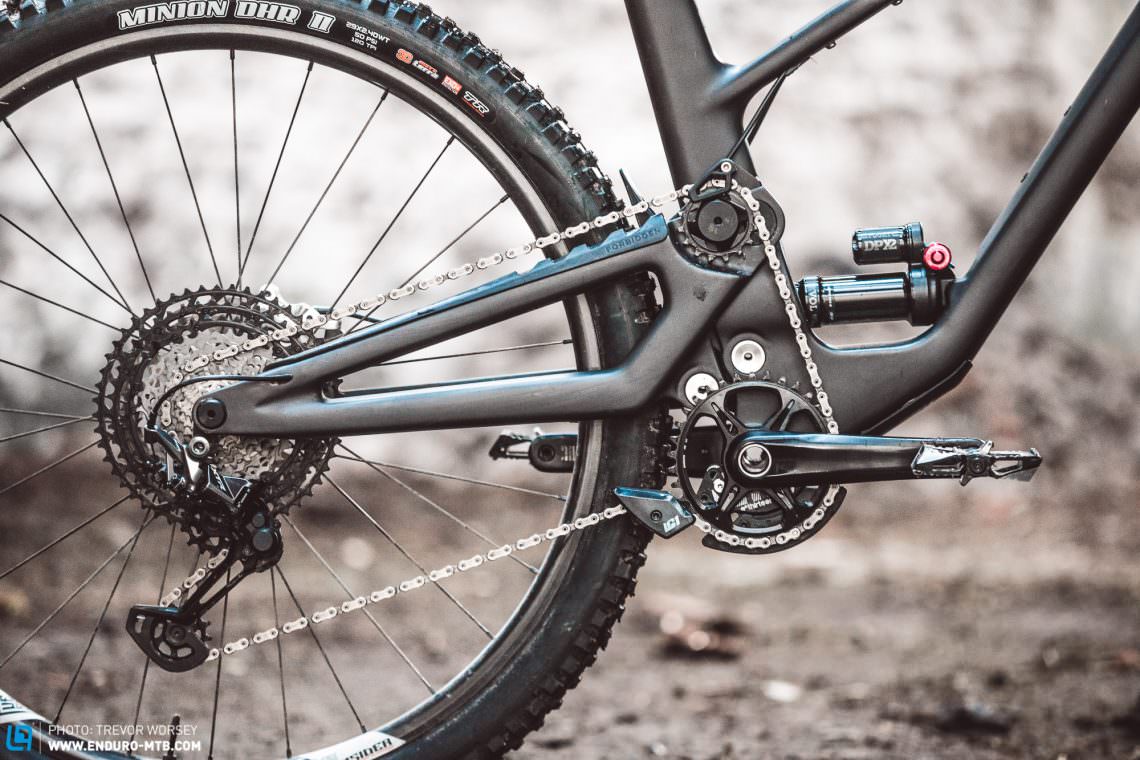
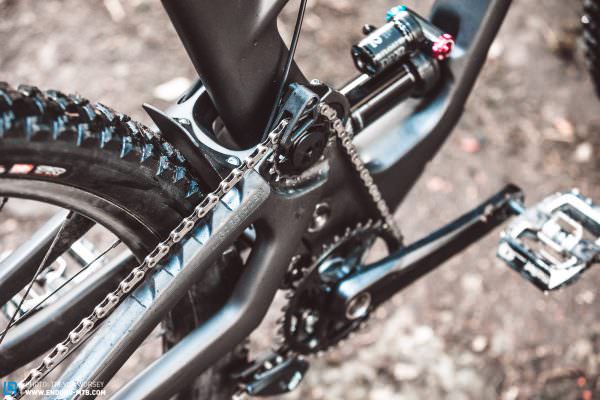
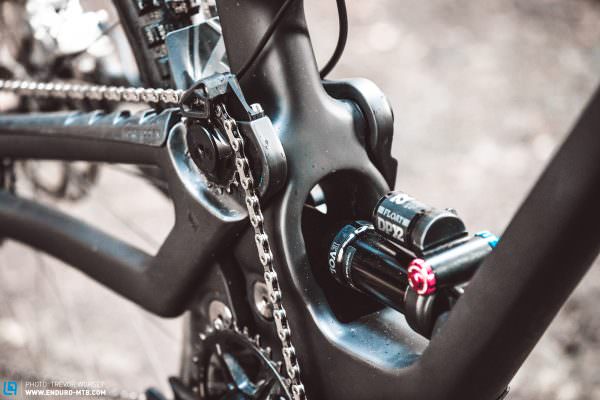
The Druid is 100% a trail bike
While the DH world gets it knickers in a twist over high-pivot bikes, Forbidden Bikes are very clear to stress that the new Druid is a trail bike. With 29 inch wheels and 150 / 130 mm of travel – the bike can also be run with a 140 mm fork – Owen claims the Druid is a bike that can handle the rough stuff but is still fun to pop into the air at every opportunity. A good-times bike. Manufactured in carbon fibre, Forbidden Bikes pull no punches when it comes to attention to detail, claiming that their carbon construction is a rival to, or exceeds the leading brands on the market.
The Trifecta Suspension design of the Forbidden Druid
Although it looks complex, the Trifecta suspension system of the Forbidden Druid is based on the relatively simple linkage-driven single-pivot design. However, the main pivot is located high on the seatstay, with a rocker between the chainstay and the shock to tailor the leverage rate and produce a highly progressive curve, for those who are interested, the ratio drops from 2.7 – 2.0. The Druid features a 100% rearward axle path, with the rear centre growing more than 26 mm at full extension, meaning the rear axle can swing up and backwards during an impact (most convention designs go up and forwards), which in theory should make it better over repeated impacts. To reduce the inevitable chain growth caused by the high-pivot and its rearward axle path a chain idler is fitted to reduce pedal kickback and undesirable chain forces. Forbidden have optimised the position of the idler pulley to bring just enough chain tension into the system to increase pedal efficiency at SAG.

Geometry of the Forbidden Druid
Upon questioning, Forbidden were keen not to pigeonhole their bike with an extreme geometry. While uber-long bikes do have many advantages in some areas, they are compromised in others, and vice-versa for short bikes. With a focus on balance, Forbidden have settled where many brands are now moving too, a 465 mm reach in size L with a 65.6 degree head angle, 75.6 degree seat angle, -32.7 mm BB drop and 438 mm chainstays – it all screams aggressive trail. Available in 4 frame sizes, Forbidden run a long headtube to give a higher stack on the L and XL models, noticing that riders of those bikes would naturally add spacers. Where we are most impressed, is that unlike most bikes, the rear-centre (chainstays effectively) length is specific for each size, changing from 414 mm in the size S up to 450 mm in the XL. This maintains almost the same front / rear centre ratio throughout the sizes (very different from fixed chainstay bikes that differ significantly through the size range) and guarantees that riders of all sizes will have the same experience.
Where we are most impressed, is that unlike most bikes, the rear-centre length (chainstays effectively) is specific for each size.
| Size | S | M | L | XL |
|---|---|---|---|---|
| Seat tube | 400 mm | 420 mm | 450 mm | 490 mm |
| Top tube | 580 mm | 604 mm | 627 mm | 650 mm |
| Head tube | 90 mm | 105 mm | 120 mm | 135 mm |
| Head angle | 65.5° | 65.6° | 65.6° | 65.6° |
| Seat angle | 75.5° | 75.6° | 75.6° | 75.6° |
| Chainstay | 416 mm | 426 mm | 438 mm | 450 mm |
| BB Drop | -32.7 mm | -32.7 mm | -32.7 mm | -32.7 mm |
| Wheelbase | 1149 mm | 1187 mm | 1225 mm | 1263 mm |
| Reach | 425 mm | 445 mm | 465 mm | 485 mm |
| Stack | 606 mm | 620 mm | 634 mm | 648 mm |

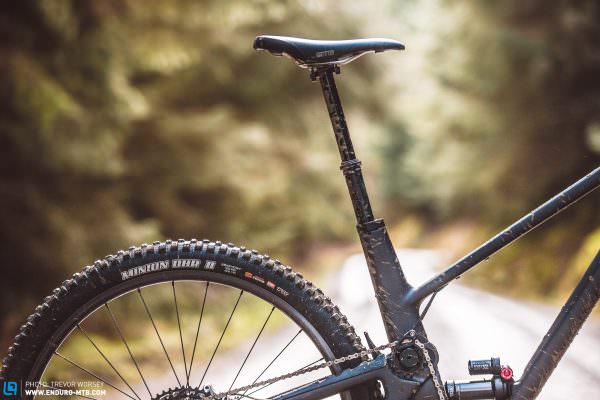

Everything in balance, what about the high anti-rise?
We know that all suspension systems are a compromise, a balance of positive and negative characteristics. High-pivot bikes have great axle paths but are known to have high levels of anti-rise, often considered a negative trait. Anti-rise is a measure of how much the suspension compresses or extends due to the force of braking. The holy-grail was always thought to be enough anti-rise under hard-braking to counteracts exactly all the forward weight transfer of bike and rider, stopping the suspension extending and pitching forward. However, on steeper trails, sometimes more anti-rise can be beneficial, while heavy-braking on steep terrain you get a lot of fork dive, if using the back brake as well, high levels of anti-rise will make the bike sit down into its travel, preserving the geometry and avoiding the pitching feeling. So, while some riders consider high anti-rise a bad thing, in many situations it can be an advantage – it depends on your riding style and home trails. The only real negatives to the high-pivot idler system are more complexity, potential noise and increased servicing.
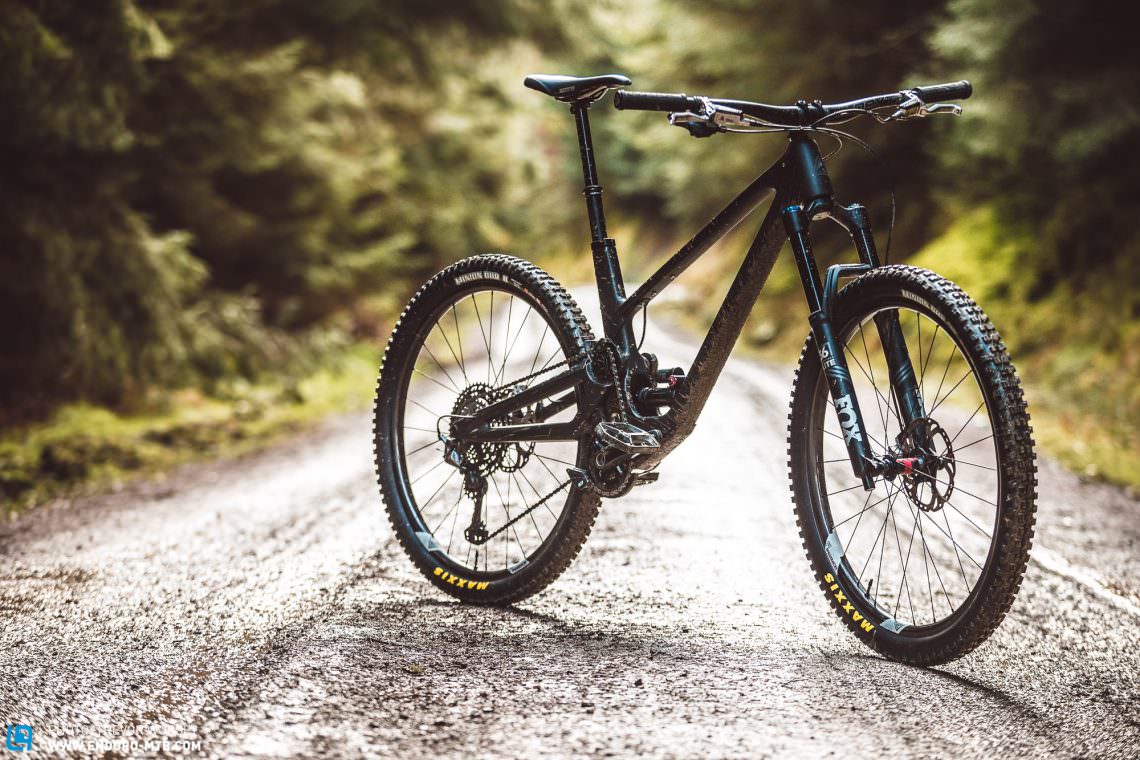
Attention to detail
As bikes grow in performance, more focus is placed on the joy and ease of ownership and looking deeper at the Forbidden Druid frame, there are a few details that really impress us. We like that the linkage has been designed with serviceability in mind, with captive top hat spacers, a two-piece rocker link for easy assembly and flat surfaces around the bearings to make extraction easy. We also like that Forbidden have forged, rather than CNCed their rockers, and use 6AL 4V Titanium in the three linkage pivots, expenses that show their dedication to making the best frame they can.
Riding the Forbidden Druid
We were given the opportunity to test ride a Forbidden Druid on home trails for a few days, and took full advantage, giving it a proper thrashing. The size Large was ideal for our 180 cm testers. Setup was very easy – however, it’s a little tougher to set SAG as the shock shaft is hidden inside the shock tunnel.

Climbing on the Forbidden Druid
It’s clear from sitting on the Forbidden Druid that they take pride in their design, all the contact points are well chosen and the demo bike we had feels very sorted. Spinning up the first climb it is immediately apparent the suspension system of the Forbidden Druid is extremely pedal neutral, sitting totally composed with no bobbing. Applying the platform damping on the FOX DPX2 shock is like a full lockout, so we switched it off and did not touch it again. The climbing position feels central and nicely balanced, and while the position cannot match the latest 78 degree + seat stayed bikes when it comes to efficiency, the 440 mm ish chainstays ensured we didn’t feel too far back. The idler ensures pedal kickback is very low and when we powered up steep, rough sections we found it very easy to pedal smoothly and maintain traction.

Descending on the Forbidden Druid
Ignoring the geometry for a second, there’s a lot going on with the Forbidden Druid that we like. We found the high-pivot rear suspension had a number of distinguishing characteristics that are easy to observe on the trail. The most noticeable is how the bike deals with fast, square edged hits. Riding back to back with a (very good) competitors bike with a conventional chainline and similar geometry, we found there was noticeably less ‘pull’ from the back on the Druid as the bike dealt with fast, repeated impacts, carrying more speed through rock gardens and moto-whoop sections. The fully rearward axle path seems to reduce the decelerative effect of repetitive hits. Secondly, when pumping through turns, the bike feels very stable under full compression – whether this is a product of the extending wheel base under compression, or just a lot of mid-stroke support is unknown, but all our testers noticed it. In the centre of a turn where you are fully loaded into the bike, the bike just feels like it hunkers down and grips harder, holding a confident line.
the Druid dealt well with fast repeated impacts, carrying more speed through rock gardens and moto-whoop sections.
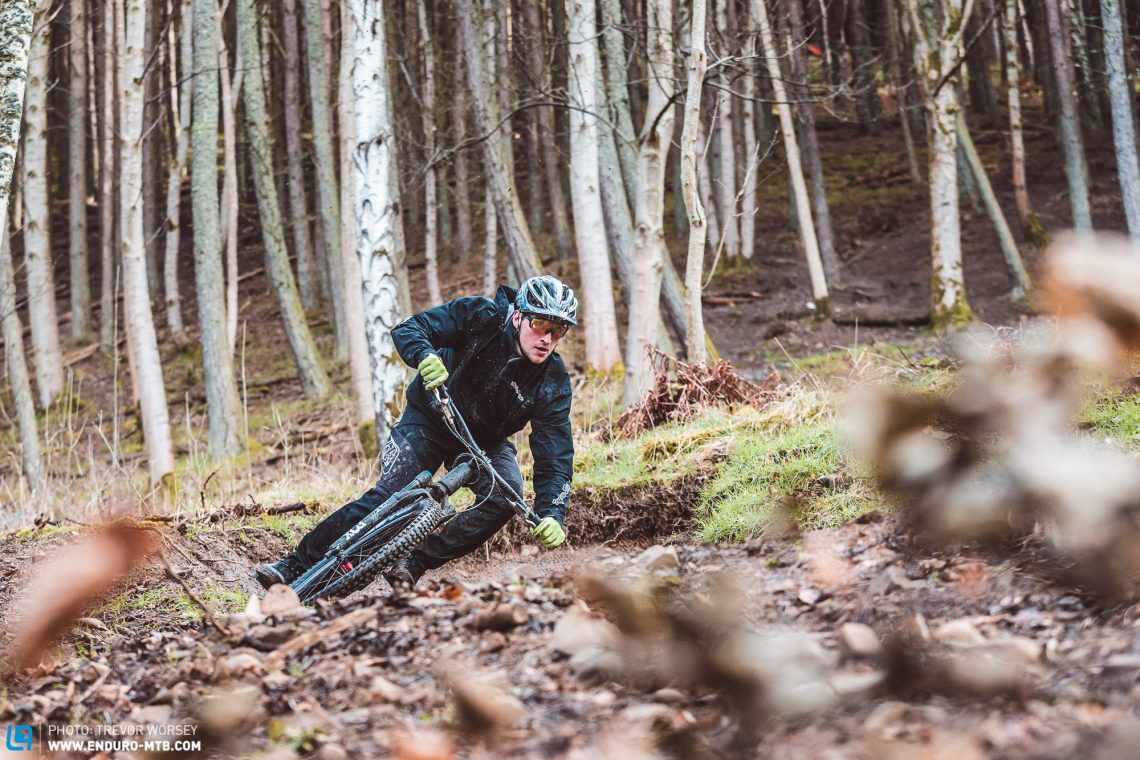
The balanced and easy-going geometry, combined with the very progressive leverage rate meant that we soon forgot we were riding just a 130 mm rear travel bike, happy to rally the bike down trails at speeds normally reserved for 160 mm bikes. The 2.7 to 2 leverage rate means that full compression bottom-outs could hardly be felt. Mid-stroke support is also very dialled, Forbidden have worked some magic and the bike feels firm and poppy when you push into it but this does not seem to come at the expense of grip at the wheel. It’s a sublime trail bike. Only the small brake rotors and high-modulation, low power TRP brakes on the test bike held us back on the steeper terrain. But with the chain running so close to the seatstay, is it noisy? Forbidden spent a lot of time choosing the compound of their seat/chainstay protector and they should give themself a high-five, the bike runs totally silently, no creaks, chain rattle or noise at all – most excellent.
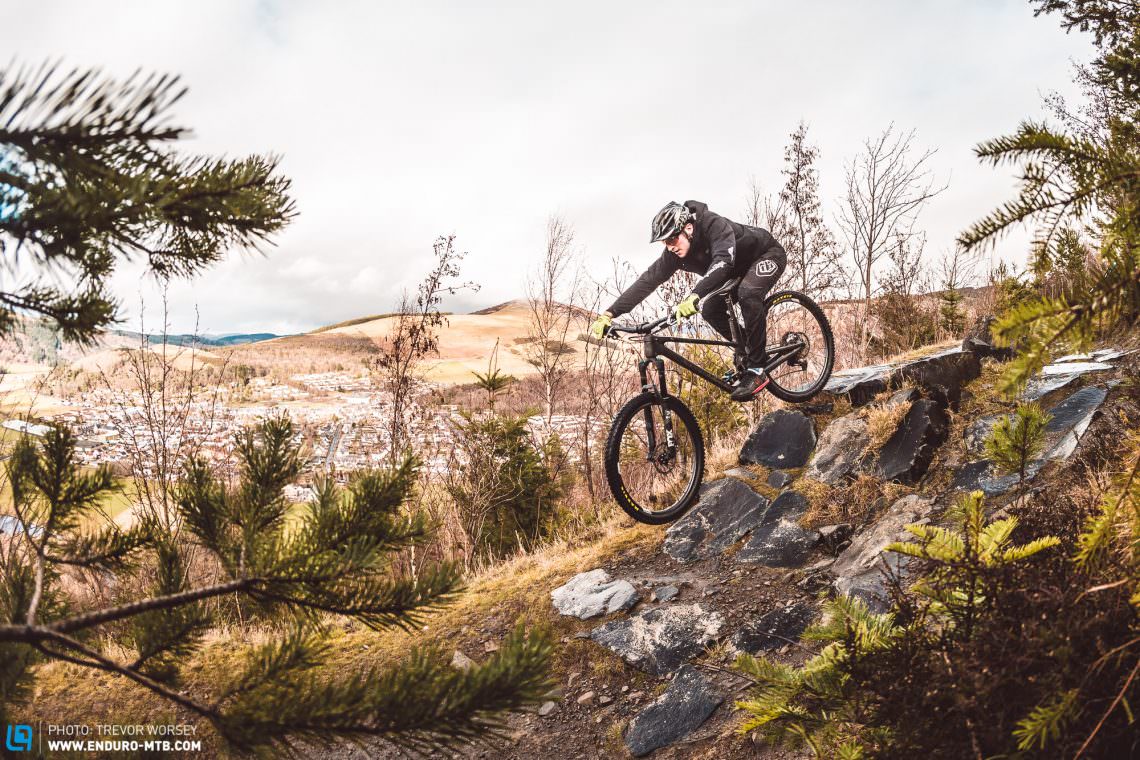
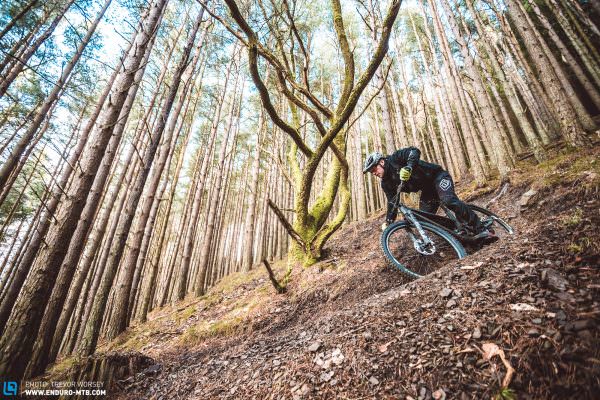

Does the idler add drag?
A common concern is that adding an idler adds significant drag to the system, is this the case? In our testing, with a fresh and well-lubed chain, we agreed there was no ‘detectable’ loss of power due to drag. Of course, you need to look after your drivetrain like any other bike. Spinning the cranks in the stand felt smooth without any additional friction compared to a conventional chain-line. Of course, there’s a negative to having the long chain, when you swap the chain the first time in the larger sizes, you will need extra links due to the length.
Is the idler noisy?
We have experienced high-pivot idler based suspension systems before and one of our common complaints is the increased chain noise, both from the idler and chain slap on the seatstay. Only time will tell if wear increases noise at the idler, however, the compound used on the chainstay protector is superb, even under a proper trashing the Forbidden Druid was a masterclass in silent running.
Is it better than a non high-pivot system?
This is a difficult question, and it will depend on how you ride and what you want from your bike. While there are observable benefits to the Forbidden Druid’s Trifecta suspension system, it’s still a compromise, just like every other system. However, we can think of few 130 mm bikes that can demolish rough trails so effortlessly. If you’re trying to merge a trail bike and enduro bike, and have deep pockets, the Forbidden Druid is well worth a test ride.

Conclusion
The Forbidden Druid is a sensational trail bike, balanced, silent and riding like nothing else – it has true category blurring potential. The Forbidden Druid dispels the myth that high-pivots are a one trick pony, only for going downhill. As a first bike from a fresh company, the Forbidden Druid is a home run! It’s expensive for sure, but if you can afford it and appreciate craft beer, you can buy something fast, fun and very awesome indeed.
Tops
- Rearward axle path improves performance over bumps
- Balanced geometry makes the most of the suspension
- Extremely fun and potent for a 130 mm bike
Flops
- High anti-rise is not for everyone
- Of course, it is expensive
For more info head to forbiddenbike.com
Did you enjoy this article? If so, we would be stoked if you decide to support us with a monthly contribution. By becoming a supporter of ENDURO, you will help secure a sustainable future for high-quality mountain bike journalism. Click here to learn more.
Words & Photos:









